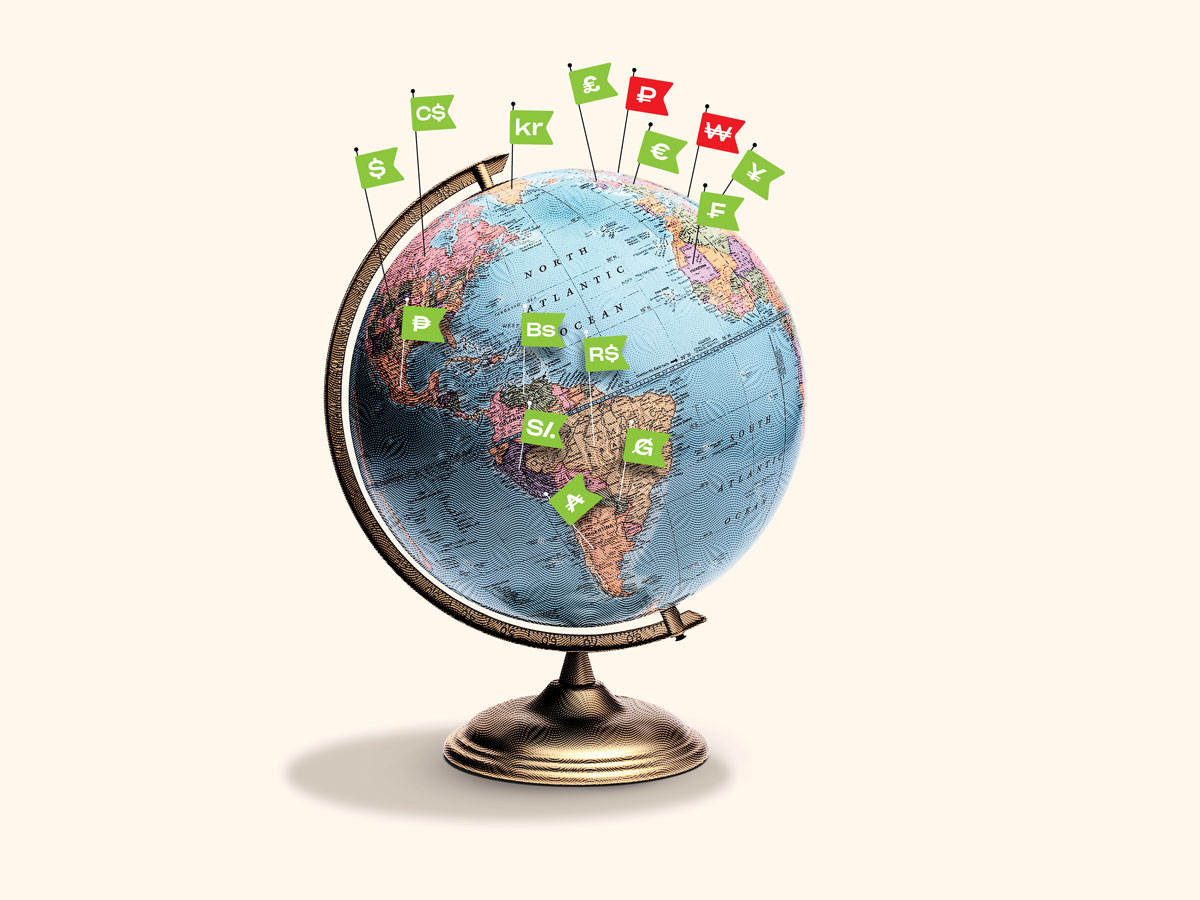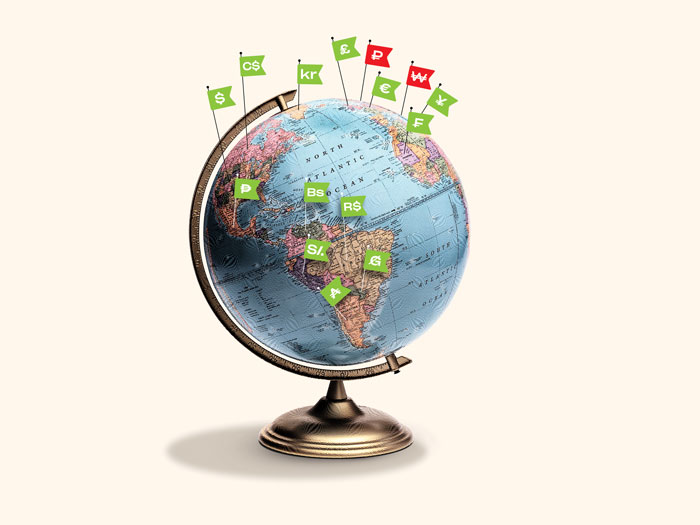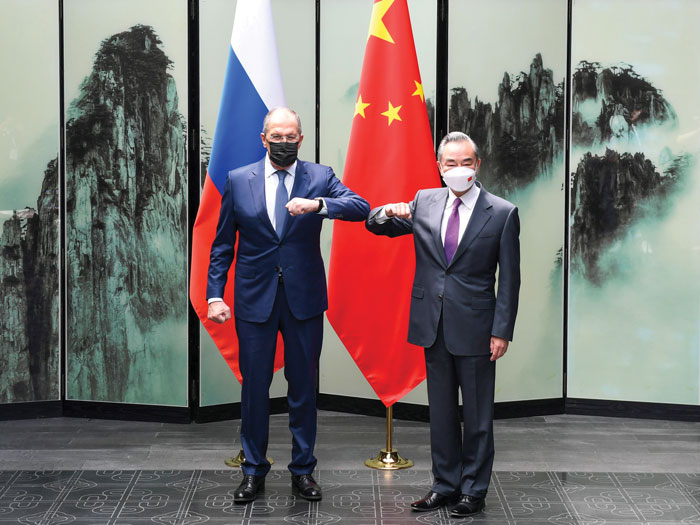
War in Ukraine is pushing many financial systems to the brink
 Russia’s war on Ukraine is highlighting the global financial system’s fragility (iStock)
Russia’s war on Ukraine is highlighting the global financial system’s fragility (iStock)
On the morning on February 24, Vladimir Putin held a press conference announcing a “special military operation” in Ukraine to, as he said, rid the nation of Nazis. Moments later, missiles and rockets rained down on Kyiv, its capital city, officially starting what would become the worst attack on a European country since the Second World War. Almost immediately, other countries jumped into action to defend Ukraine, but they didn’t use bombs and bullets. Their weapon of choice? The interconnected global financial system.
That day, the U.S. announced what it called “unprecedented action” against Sberbank and VTB Bank, two of Russia’s largest financial institutions, by preventing them from processing payments through the U.S. financial system. Those two banks alone conduct billions of dollars of foreign-exchange transactions globally, 80 per cent of which are in greenbacks. Cutting off these two institutions from routing money through the U.S. would have made it nearly impossible for Russian companies to do business with American companies.
Two days later, several countries took to the financial front again, this time unleashing what many consider a far more devastating blow to Russia’s economy. The Society for Worldwide Interbank Financial Telecommunications (SWIFT), a messaging service that 11,000 banks across 200 countries use to direct payments barred several Russian financial institutions from accessing its system. In an instant, it became extremely difficult for Russians, whether a company, oligarch or average citizen, to send or receive any money to and from other countries. While Putin didn’t specifically comment on the SWIFT sanction, in 2014, when Russia annexed Crimea, the Russian president said that such a ban would be tantamount to a declaration of war.
These high-profile sanctions, among others that the U.S. and Canada have imposed on Russia over the last two months, have worked. Russia announced on April 12 that, because it couldn’t convert rubles into U.S. dollars, it would likely default on millions of bond interest payments (it was later able to make the payments.) They’ve also put the global financial system and, in particular, how people and countries use it for nefarious purposes, in the spotlight.
Until the invasion, most people didn’t give much thought to SWIFT or how oligarchs move money around the world. Now, however, everything from money laundering to the way countries buy oil and gas is top of mind. “The Ukraine crisis has focused attention on the political situation in Russia and the role of the oligarchs,” says Laurence Both, the CIT chair in structured finance at the Rotman School of Management. “This has highlighted money laundering and how these oligarchs got billions out of Russia to buy pricey properties and ridiculously expensive yachts.”
Wealthy Russians, including its oligarchs and even its president, are widely considered among the worst money laundering offenders. A paper from the Paris School of Economics found that, in 2015, wealthy Russians’ hidden wealth was equal to 85 per cent of Russia’s GDP. Bill Browder, a former Russia-based investment adviser who famously pushed the U.S. to adopt the Magnitsky Act allowing the country to freeze assets of human rights offenders, said, in a recent interview with NPR: “If you were to ask me why Putin is invading Ukraine, it’s because he has stolen so much money that he’s afraid of the Russian people rising up and he needed a distraction.”
Indeed, many people think that Russia’s attack has been financed from illicit gains, says Michele Wood-Tweel, vice-president of regulatory affairs at CPA Canada, with money potentially coming from drug sales, weapons deals and tax evasion. “Russia for a very long time, has taken full advantage of the gaps within the financial system,” she explains. “So, you’ve seen a lot of money laundering done by Russia in the form of real estate or with virtual currencies or offshore tax havens.”
“What you’re seeing is Russia’s corruption coming home to roost,” she adds. “They’ve taken advantage of situations in a variety of different jurisdictions around the globe and have put themselves in a position of power and wealth, where they’ve got money to fund what they’re now doing in Ukraine.”
 High-end yachts are among the assets seized by authorities around the world as a result of the Russian invasion of Ukraine (Getty Images)
High-end yachts are among the assets seized by authorities around the world as a result of the Russian invasion of Ukraine (Getty Images)
HOW MONEY GETS LAUNDERED
Where there’s crime, there may be money laundering, says Ivan Zasarsky, a partner and national financial crime practice leader and chief anti-money laundering officer with PwC Canada. Crime itself, whether it’s drug smuggling, theft, extortion or human trafficking, isn’t reliant on telecommunications networks and the proceeds of those crimes will find their ways into people’s hands one way or another.
However, our interconnected global finance systems makes it easier, in many ways, to hide those funds among the trillions of other dollars that get moved around the world. “International telecommunications systems are designed to remove frictional barriers and increase the transmission of instructions for international trade,” he says. “They’re not specifically designed to prevent financial crime.”
Money laundering is also fairly easy to do, as long as no one is watching. It happens in three steps, all of which may use, or abuse, different parts of the financial system, says Zasarky.
Step 1: Placement
Here, gangs, governments, companies and others place their criminally earned funds into the financial system. There are many ways to do this, such as by buying gambling chips and then converting them back into cash, but one popular method is called smurfing, where criminals deposit small amounts of money into different accounts, usually under the regulatory reporting limit of $10,000, to avoid detection. This was one of drug kingpin El Chapo’s favourite strategies.
Step 2: Layering
Layering is when illegal money, now in legitimate accounts, gets moved around internationally to hide its source—often using SWIFT to distance those dollars from the criminals. These funds get transferred into more bank accounts, but also into various kinds of investments, whether it’s stocks, cryptocurrencies or derivatives, such as options. The more the money gets moved between investments, the harder it gets for authorities to track the funds back to their original source.
Step 3: Integration
This final stage involves the money coming back to the criminal from legitimate sources. It’s in this phase where a person might buy a business that generates dividends and profits or a house or condo that they can then sell for a wad of cash. The point is to earn back that laundered money, and then some, in a way that doesn’t draw attention.
There are other laundering strategies within these steps, too. For instance, it’s widely known that Russia uses what’s called trade-based money laundering, where it takes advantage of trade rules to send money across borders. In the famous Moldovan Laundromat scheme, which was broken up in 2014, the Russian treasury used a vast array of shell companies to divert funds that were raised through fraud, rigged state contracts, and customs and tax evasion.
According to the Organized Crime and Corruption Reporting Project, these shell companies created fake debts, which other shell companies then said they couldn’t pay back. The "lenders" then went a to Moldovan court, which ordered the Russian companies that owed the "debt" to pay those funds into a court-controlled account at a bank where these shell companies also kept accounts. Suddenly, billions of dollars flowed into the bank, then into the shell company bank accounts, some of which was then moved to a bank in Latvia, but a lot was used to fund purchases, including sending Florida rock band the Red Jumpsuit Apparatus on tour across Russia. There is no suggestion the band was aware of the scheme. About US$20 billion was laundered, though authorities say it could be closer to US$80 billion.
TOUGH TO CATCH
What makes money laundering so difficult to catch, says Booth, is that most of the money that gets sent through SWIFT first gets transferred into U.S. dollars and then turned into its intended currencies, whether it’s Canadian dollars, British pounds or Chinese yuan. Once the money gets mixed into the U.S. currency system, it becomes that much harder to find. "If you’re a Russian oligarch, you spend that money through U.S. dollars, because there’s so much volume and liquidity in the system that you can hide it among all the other transactions."
The other challenge with money laundering is it often requires someone at a legitimate bank to take part in someone's scheme. Numerous banks and individuals at banks have been busted for aiding and abetting criminal activity. For instance, in 2017, Deutsche Bank was fined $630 million for failing to prevent $10 billion in suspicious trades, which turned out to be from Russian money launderers. In 2020, Goldman Sachs was fined more than $3 billion for its role in a scheme in which 1MDB, a Malaysian development company, deposited money raised for public development projects into people’s personal accounts, including that of a former prime minister.
Fortunately, banks and authorities are getting better at detecting money laundering activity, says Zasarsky. Each country has its own anti-money laundering rules and the intergovernmental Financial Action Task Force (FATF) serves as a global money laundering and peer-to-peer terrorist financing watchdog. It sets standards and then works with local policy makers to implement changes at a national level.
More countries are also implementing artificial intelligence and other data analytics solutions, which Zasarsky says are improving every day, to flag unusual account activities. Countries are also sharing far more information with each other than ever before, while FATF’s National Risk Assessment, a detailed process that helps countries identify and assess their money laundering-related vulnerabilities, has helped countries close gaps and improve enforcement.
But no process or no policy is perfect. “It’s a continuous battle between the creativity of those that want to circumvent the system and move their ill-gotten gains, and the reporting entities and the actors involved within each country to manage and limit those particular acts,” says Zasarsky.
 Russia and China have developed their own SWIFT alternatives, partly as a way to circumvent U.S. sanctions (Getty)
Russia and China have developed their own SWIFT alternatives, partly as a way to circumvent U.S. sanctions (Getty)
CHINA’S GROWING DOMINANCE
As interconnected as this system may be, the reason it’s worked well for so long is because of America’s role in global finance, says Booth. The country has been so dominant when it comes to importing and exporting capital, that countries had no choice but to trade in U.S. dollars, even when trading with a country other than America. However, that dominance is being threatened by China, which many expect will become the world’s largest economy by 2030.
Over the last couple of decades, trade between Russia and China has increased dramatically. China is now the top destination for Russian exports, although the U.S. continues to be China’s largest trading partner by a wide margin. In fact, China increased energy imports from Russia by 26 per cent in March 2022.
What’s more troubling to many is that the two have been working on SWIFT alternatives, in part to circumvent any potential U.S. sanctions. In 2014, after the U.S. first threatened to disconnect Russia from SWIFT, it created the System for Transfer of Financial Messages, also known as SPFS, while China built the Cross-Border Interbank Payment System (CIPS), to make it easier to send yuan across borders. With Russia now being cut off from SWIFT and with China looking to become more independent from the U.S., the two nations could be pushed to make their SWIFT alternatives more effective. “China is challenging the U.S. It wants to be treated as a great power,” says Booth. “They’re trying to form a parallel organization so that China can buy gas and oil from Russia using a ruble-yuan market. “
That creates two problems: One is that the U.S. State Department still considers China a “primary concern” when it comes to money laundering, while the FATF reported that China is only compliant on nine of its 40 recommendations. If the two countries use a SWIFT alternative, money laundering will become that much harder to catch.
China’s dominance, and its increasing trade with Russia and other politically similar nations, also threatens democracy, says David-Alexandre Brassard, CPA Canada’s chief economist. “What it means is basically the fight of democracy against totalitarianism and that’s a bit scary. China keeps growing and what I fear is that countries around the world are going to look at the two models and think their model is better than the other one.”
China still has a long way to go before the yuan becomes the currency of choice around the world and CIPS and/or SPFS replace SWIFT. It’s possible it’ll never happen, given how many countries are part of SWIFT. It’s also possible that the Ukraine crisis makes even more people pay attention to how the financial system works – for good and bad.
“If there’s a silver lining to this, it’s that it’s given a textbook example of how bad this system can be if people turn a blind eye to it and aren’t willing to call out what goes on in regimes around the world, and that includes money laundering,” says Wood-Tweel. “We could see new commitment from countries and more willingness to do things differently in the future. And, hopefully, these countries can stick to that. You can’t get rid of the global scheme of things. You have to use the global scheme to your benefit the same way criminals take advantage of it.”
KEEP UP WITH AML
When it comes to Canada’s anti-money laundering guidelines, it’s essential to be aware of the new measures that CPAs need to keep on their radar.